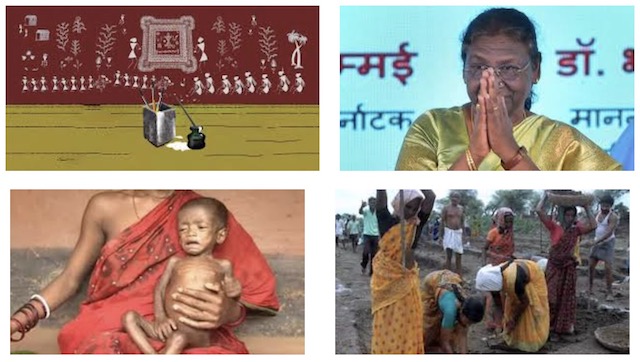A three-day exhibition on tribal heritage of the Eastern Ghats is commencing at the Visakha Museum here on Friday. Photographs, handicraft items, jewellery, etc. depicting the life of Girijans in Araku area of the district, Srikakulam and from the border with Odisha will be on display. An NGO, Samata working for protection of rights and culture of the Adivasi people in the Eastern Ghats, is organising the exhibition to explain the Girijans’ connection to nature and to their native land, their traditional knowledge and compact community living.
One of its volunteers from Germany Nina Langbehn compiled the exhibits. “Girijans’ life style is inspiring and in terms of sustainability they are not backward at all. In the course of globalisation, westernisation and industrialisation, it is not easy to keep cultures of the minority alive.
Languages and knowledge are getting lost for the sake of economic growth.
The exhibition shows these cultures and their beauty”, says a press release from Samata.
The exhibition is open to public from 11 a.m. to 7 p.m. on Friday after Municipal Commissioner B.V. Ramanjaneyulu and Gandhian K.S. Sastry inaugurates it at 10 a.m.
The exhibition is open from noon to 8 p.m. on Saturday and Sunday.
Source: “Exhibition on tribal heritage”, The Hindu, VISAKHAPATNAM, June 1, 2012
Address : http://www.thehindu.com/todays-paper/tp-national/tp-andhrapradesh/article3479066.ece
Date Visited: Tue Jun 05 2012 00:33:47 GMT+0200 (CEST)

linked to each other.” – Droupadi Murmu | Speeches by the 15th President of India >>
Images © publishers, artists & photographers featured by Google Safe Search
Learn more about water-related issues that affect India’s tribal communities >>
“Together, we must endeavour to strengthen tribal communities which are the role model in preservation of water, forest and land, and learn from their connection with nature and the surrounding environment for the sake of the entire human race.” – journalist and tribal rights activist Dayamani Barla in The Wire >>
Up-to-date reports by Indian journalists and commentators
To search Indian periodicals, magazines, web portals and other sources safely, click here. To find an Indian PhD thesis on a particular tribal community, region and related issues, click here >>
Search tips
Combine the name of any particular state, language or region with that of any tribal (Adivasi) community.
Add keywords of special interest (music, poetry, dance just as health, sacred grove and biodiversity); learn about the rights of Scheduled Tribes such as the “Forest Rights Act” (FRA); and the United Nations “Declaration on the Rights of Indigenous Peoples”, “Universal Declaration of Human Rights”, “women’s rights”, or “children’s right to education”.
Specify any other issue or news item you want to learn more about (biodiversity, bonded labour and human trafficking, climate change, ecology, economic development, ethnobotany, ethnomedicine, global warming, hunter-gatherers in a particular region or state, prevention of rural poverty, water access).
For official figures include “scheduled tribe ST” along with a union state or region: e.g. “Chhattisgarh ST community”, “Himalayan tribe”, “Scheduled tribe Tamil Nadu census”, “ST Kerala census”, “Particularly Vulnerable Tribal Group Jharkhand”, “PVTG Rajasthan”, “Adivasi ST Kerala”, “Adibasi ST West Bengal” etc.
In case the Google Custom Search window is not displayed here try the following: (1) toggle between “Reader” and regular viewing; (2) in your browser’s Security settings select “Enable JavaScript” | More tips >>
Note: hyperlinks and quotes are meant for fact-checking and information purposes only | Disclaimer >>
See also
Adverse inclusion | Casteism | Rural poverty
Demographic Status of Scheduled Tribe Population of India (Census figures 2011)
Fact checking | Figures, census and other statistics
Human Rights Commission (posts) | www.nhrc.nic.in (Government of India)
Search tips | Names of tribal communities, regions and states of India
“What is the Forest Rights Act about?” – Campaign for Survival and Dignity
“Who are Scheduled Tribes?” – Government of India (National Commission for Scheduled Tribes, NCST)